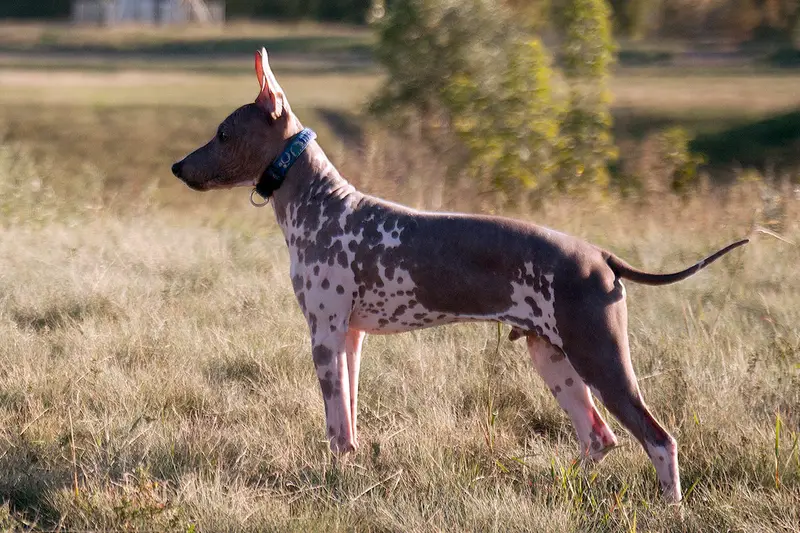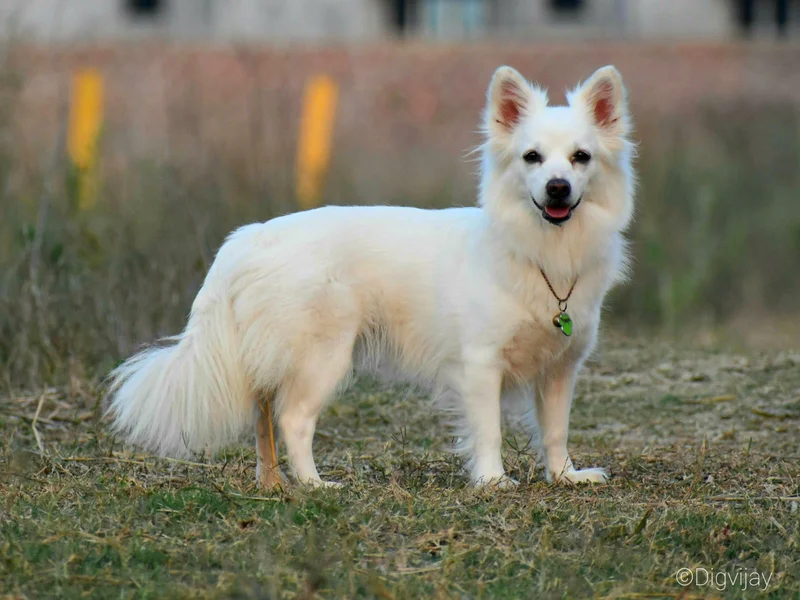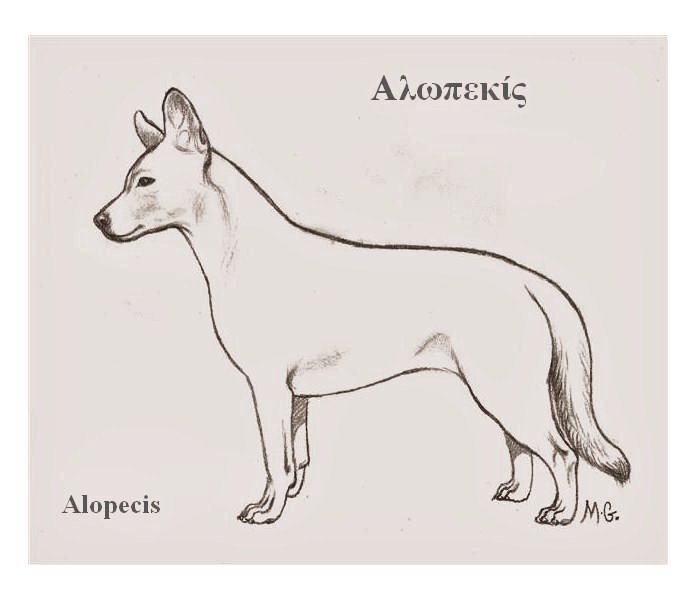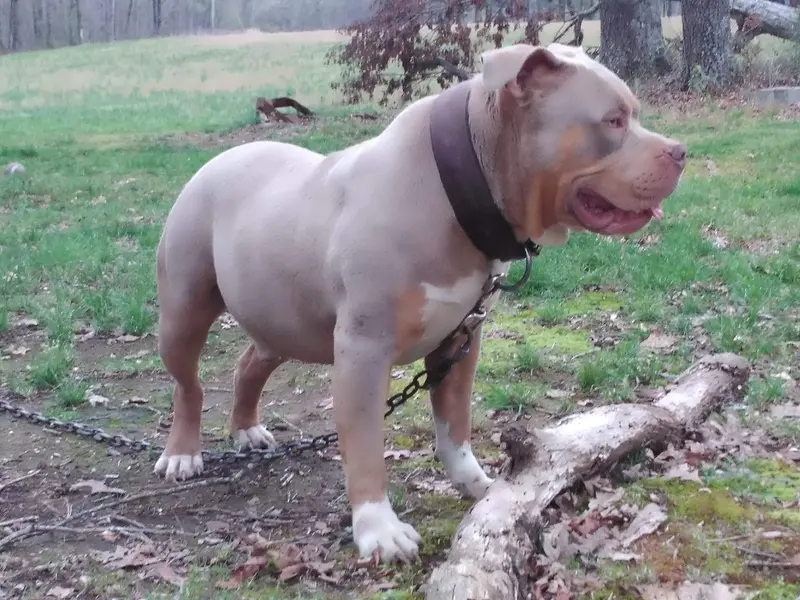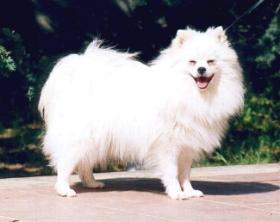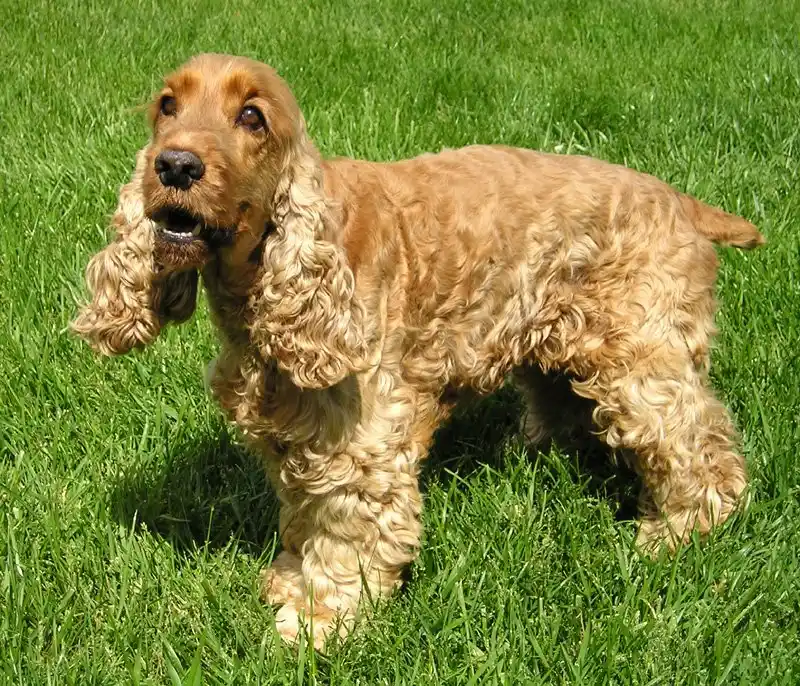Tenterfield Terrier
The Tenterfield Terrier is a small, agile breed known for its friendly nature and intelligence. Originally bred for vermin control, they make excellent family companions and thrive on regular exercise and mental stimulation.
Overview
🐕Breed Overview
✨Key Traits
💡What Makes Tenterfield Terrier Special
The Tenterfield Terrier is characterized by its compact and sturdy build, with a smooth coat that is easy to maintain. Their wedge-shaped head and naturally occurring bobtail are distinctive features that set them apart from other terriers.
These dogs are known for their agility and speed, making them excellent companions for active families. Their friendly and adaptable nature allows them to thrive in various living situations, whether in a bustling city or a quiet rural setting.
Tenterfield Terriers are also known for their intelligence, making them quick learners and eager participants in training and dog sports. Their affectionate personality makes them wonderful family pets, as they enjoy being involved in family activities and interactions.
The Tenterfield Terrier is a small, agile breed that has captured the hearts of dog lovers in Australia and beyond. With a rich history dating back to the arrival of British settlers, these dogs were originally bred for vermin control on ships and in rural households. Their compact size and friendly disposition make them ideal companions for families and individuals alike.
Tenterfield Terriers are known for their distinctive wedge-shaped heads, pricked or semi-erect ears, and a naturally occurring bobtail that adds to their unique charm. Their smooth, short coat is predominantly white, often adorned with brown or black markings, making grooming a breeze. These energetic dogs require regular exercise to stay healthy and happy, with at least 60 minutes of activity each day.
They excel in various activities, including agility training, fetch, and interactive play, which cater to their natural instincts and high energy levels. Tenterfield Terriers are intelligent and trainable, making them suitable for families and first-time dog owners. Their friendly nature and adaptability allow them to thrive in different living environments, from apartments to larger homes.
Despite their small stature, Tenterfield Terriers are bold and confident, often displaying a protective instinct towards their families. They are known for their affectionate demeanor and enjoy being part of family activities. With an average lifespan of 12 to 14 years, these dogs can be long-term companions, bringing joy and energy to any household.
Whether you're looking for a playful family pet or an active companion for outdoor adventures, the Tenterfield Terrier is a breed that stands out for its loyalty, intelligence, and charm.
🎉Fun Facts
Tenterfield Terriers can jump impressively high, showcasing their agility.
The breed's name reflects its connection to the town of Tenterfield, known for its historical significance in Australia.
They are known for their unique wedge-shaped heads, which set them apart from other terrier breeds.
Breed Characteristics
Family & Friends
Good Behavior
Get Up & Go
Household Harmony
Temperament & Personality
✨Key Traits
🐕Core Temperament
The Tenterfield Terrier is spirited, alert, and courageous, embodying the natural traits of a ratter and companion. They are friendly and affectionate, making them excellent family pets.
Their adaptability allows them to thrive in different environments, and they generally get along well with children and other pets. However, early socialization is essential to ensure they develop good manners and confidence.
While they can be independent thinkers, their intelligence and eagerness to please make them trainable and responsive to commands. Overall, Tenterfield Terriers are known for their lively and loving personalities, making them cherished companions.
💫Personality Profile
Tenterfield Terriers are known for their friendly and outgoing nature. They are highly adaptable dogs that thrive in various environments, making them suitable for families, singles, and seniors alike.
Their intelligence and eagerness to please make them relatively easy to train, and they respond well to positive reinforcement methods. These dogs are playful and energetic, enjoying interactive games and outdoor activities.
They are also known for their affectionate demeanor, often forming strong bonds with their families and seeking companionship. Despite their small size, Tenterfield Terriers can be bold and confident, displaying a protective instinct towards their loved ones.
🔊Vocal Tendencies
Tenterfield Terriers have a moderate noise level, with a tendency to bark when they are excited, alert, or seeking attention. They may bark to communicate with their owners or to alert them to unfamiliar sounds or visitors.
While they are not excessive barkers, their vocalizations can be more frequent if they are not adequately exercised or mentally stimulated. Proper training and socialization can help manage their barking tendencies, ensuring they remain well-behaved and content in various situations.
Affection & Social Traits
Energy & Activity
Communication Style
Care Requirements
🏃♂️Exercise Requirements
Daily Exercise
The Tenterfield Terrier is an active and energetic breed that requires regular exercise to maintain its physical and mental well-being. Ideally, they should have at least 60 minutes of exercise each day, which can be broken down into multiple sessions.
Activities such as brisk walks, playtime in a secure yard, and engaging in dog sports like agility or flyball are excellent for this breed. Puppies may require shorter, more frequent play sessions to accommodate their developing bodies, while senior dogs may benefit from gentler activities to avoid strain.
Regular exercise helps prevent obesity, supports cardiovascular health, and reduces behavioral issues stemming from boredom or excess energy. Insufficient exercise can lead to destructive behaviors, anxiety, and weight gain, making it crucial for owners to prioritize their Tenterfield Terrier's activity needs.
Preferred Activities
🏠Living & Adaptability
Space Requirements
Tenterfield Terriers are adaptable and can thrive in various living environments, including apartments, houses with small yards, or larger properties. However, they do require sufficient space to move and play.
In smaller living situations, owners should ensure that the dog receives adequate exercise through daily walks and playtime. The breed's compact size and energy level make them suitable for urban living, but they should have access to outdoor spaces for exercise and socialization.
Without enough space or stimulation, Tenterfield Terriers may exhibit destructive behaviors or anxiety, so it's essential to provide them with opportunities to explore and engage with their environment.
Climate Preference
🍲Feeding Guide
Schedule
Food Types
Portion Size
Special Nutritional Needs
Tenterfield Terriers do not have specific dietary restrictions, but it's essential to provide a balanced diet rich in protein and healthy fats to support their active lifestyle. Owners should monitor their dog's weight and adjust portion sizes accordingly, especially if the dog is less active. Regular veterinary check-ups can help identify any potential food sensitivities or allergies.
✨Grooming Requirements
Grooming Overview
The Tenterfield Terrier has a smooth, short coat that is low maintenance. Regular brushing is recommended to remove loose hair and dirt, but they typically shed minimally.
Bathing should be done as needed, usually every few months or when they become particularly dirty. Regular checks of their ears, teeth, and nails are essential for overall health.
Ears should be kept clean and dry to prevent infections, and nails should be trimmed regularly to avoid overgrowth.
Care Schedule
Brush weekly, bathe as needed, trim nails every 2-4 weeks.
Health Profile
⚕️Health Care
Regular health care is essential for the Tenterfield Terrier's lifespan. Routine veterinary check-ups, vaccinations, and preventive treatments can help catch health issues early and ensure the dog remains healthy throughout its life.
Owners should also prioritize dental care, as dental disease can lead to other health complications. Maintaining a healthy diet, providing regular exercise, and monitoring for any changes in behavior or health can significantly impact the dog's longevity.
Health Issues Overview
⏳Average Lifespan
Genetic Factors
Genetics play a significant role in the Tenterfield Terrier's lifespan, with hereditary health issues potentially affecting longevity. Responsible breeding practices that prioritize genetic diversity and health testing can help reduce the risk of inherited conditions.
Potential owners should seek reputable breeders who conduct health screenings and provide health guarantees for their puppies. Understanding the breed's genetic predispositions can help owners make informed decisions about their dog's care and health management.
Living Conditions
The Tenterfield Terrier's lifespan can be influenced by various environmental factors, including housing conditions, climate, and social interactions. Dogs living in stable, loving environments with regular veterinary care tend to live longer, healthier lives.
Access to outdoor spaces for exercise and play is crucial, as is a balanced diet and mental stimulation. Social interactions with humans and other pets can also positively impact their overall well-being, reducing stress and anxiety.
Owners should ensure their Tenterfield Terrier has a safe and engaging environment to promote longevity.
🏥Common Health Issues
Luxating Patella
Warning Signs
🔬Diagnosis
Physical examination and X-rays by a veterinarian.
💊Treatment
Surgical intervention may be required in severe cases.
📝Management Tips
Maintain a healthy weight, provide joint supplements, and avoid high-impact activities.
Allergies
Warning Signs
🔬Diagnosis
Allergy testing and elimination diets.
💊Treatment
Antihistamines or corticosteroids may be prescribed.
📝Management Tips
Identify and avoid allergens, use hypoallergenic products, and consult a veterinarian for treatment options.
Hip Dysplasia
Warning Signs
🔬Diagnosis
X-rays and physical examination.
💊Treatment
Surgery may be necessary in severe cases.
📝Management Tips
Maintain a healthy weight, provide joint supplements, and avoid excessive exercise.
🛡️Preventive Care
🔬Hip Evaluation
Hip Evaluation assesses the dog's hip joints for dysplasia and other abnormalities, which can affect mobility and quality of life.
📅 Annually after 12 months of age.
🔬Patellar Luxation Screening
Patellar Luxation Screening evaluates the stability of the kneecap and identifies any potential luxation issues that may require management or treatment.
📅 Annually after 12 months of age.
🔬Allergy Testing
Allergy Testing identifies specific allergens that may affect the dog's skin and overall health, allowing for tailored management strategies.
📅 As needed, especially if symptoms arise.
Training
🧠Intelligence & Trainability
💪Work Drive
Tenterfield Terriers have a strong work drive, stemming from their history as vermin hunters. They thrive on tasks that challenge their intelligence and agility.
Activities such as agility training, obedience competitions, and interactive games are excellent for keeping them mentally stimulated. Providing them with jobs, like fetching items or participating in dog sports, can help satisfy their need for purpose and engagement.
Without sufficient mental and physical stimulation, they may become bored and exhibit undesirable behaviors.
⚠️Training Considerations
Tenterfield Terriers can exhibit some behavioral challenges typical of terrier breeds, such as stubbornness or a strong prey drive. They may be prone to barking, especially if not properly socialized or trained.
To address these challenges, early socialization and consistent training are essential. Positive reinforcement techniques, such as rewards and praise, work well with this breed.
Owners should be patient and persistent, using engaging training methods to keep their Tenterfield Terrier focused and motivated. Providing mental stimulation through puzzle toys and interactive games can also help mitigate behavioral issues.
📝Training Tips
Training a Tenterfield Terrier requires consistency, patience, and positive reinforcement. Start with basic obedience commands, such as sit, stay, and come, using treats and praise to encourage good behavior.
Socialization is crucial; expose your dog to various environments, people, and other animals from a young age to promote confidence and reduce anxiety. Incorporate fun activities like agility training or interactive play to keep your dog engaged and mentally stimulated.
Regular training sessions should be short and enjoyable to maintain the dog's interest and enthusiasm.
History & Heritage
📜Origin Story
The Tenterfield Terrier's origins trace back to the early British settlers who arrived in Australia from Portsmouth, England. These settlers brought with them small terriers, which were essential for controlling vermin on ships.
The compact size of these dogs made them ideal for the cramped conditions aboard vessels, where they could hunt rats and mice that threatened food supplies. As the settlers established their homes in Australia, these terriers adapted to their new environment, becoming integral to rural life as both vermin hunters and family companions.
The breed's name, Tenterfield Terrier, was suggested in the 1990s by television personality Don Burke, reflecting the breed's connection to the town of Tenterfield, which has historical significance in Australia. The breed has since gained recognition and appreciation for its friendly nature and versatility.
⏳Development History
The Tenterfield Terrier's development began with the arrival of British settlers in Australia, who brought small terriers bred for vermin control. By the late 19th century, these dogs had evolved into what was known as the Miniature Fox Terrier, commonly used as family companions and vermin hunters.
In the 1990s, breeders sought to establish a distinct breed standard for these dogs, leading to the formation of the Tenterfield Terrier Club of Australia in 1993. The breed was officially recognized by the Australian National Kennel Council (ANKC) in 2002, distinguishing it from the Miniature Fox Terrier and solidifying its status as a separate breed.
🛡️Purpose & Historical Role
Originally bred for vermin control, the Tenterfield Terrier served as a small, agile companion for British settlers in Australia. Their primary role was to hunt and eliminate pests, making them invaluable on ships and in rural households.
Over time, they evolved into beloved family pets, known for their loyalty and adaptability. Today, Tenterfield Terriers continue to excel in various roles, including as companions, agility competitors, and therapy dogs, showcasing their intelligence and versatility.
🏺Cultural Significance
The Tenterfield Terrier holds a unique place in Australian history, as it was developed from small terriers that accompanied British settlers to Australia. These dogs played a crucial role in controlling vermin on ships and later became beloved companions in rural and urban households.
The breed's name is derived from the town of Tenterfield in New South Wales, which is significant for its historical events, including the Tenterfield Oration advocating for Australian independence. The breed's development reflects the adaptability and resourcefulness of early Australian settlers, making it a symbol of companionship and utility in the Australian landscape.
Conservation Status
This breed is well-established with healthy population numbers.


